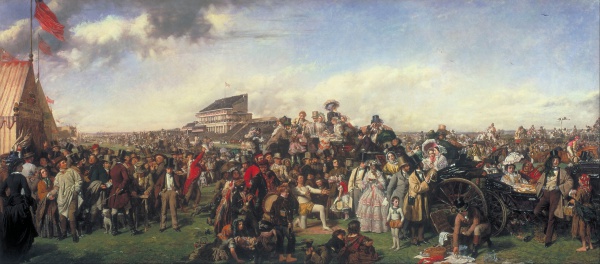Facts About The Derby Day
"The Derby Day" is an acclaimed oil painting by William Powell Frith, created between 1856 and 1858. Often celebrated as Frith's magnum opus, it epitomizes the Victorian modern-life genre painting. The original artwork is housed in Tate Britain, London, while a second version resides in the Manchester Art Gallery. The painting humorously captures Victorian society at the annual Derby event at Epsom Downs, showcasing a wide array of characters and scenes.
Frith's painting vividly delineates the different social classes and activities at the Derby, featuring gambling, acrobatics, picnicking, and social mingling. He was meticulous in his depiction, employing physiognomy to reflect the social status and personality of each character through their facial features. The artwork was lauded for its intricate portrayal of London life during the Derby, interweaving elements of luxury, wealth, beauty, refinement, and even destitution.
To create this masterpiece, Frith utilized live models and photographs of the Epsom racecourse, dedicating nearly two years to its completion. When it was exhibited at the Royal Academy in 1858, it garnered immense popularity, attracting large crowds and necessitating the installation of a protective railing. Eventually, the painting was bequeathed to the National Gallery and subsequently transferred to Tate Britain. Frith also completed a second version for James Gresham, which is now part of the collection at the Manchester Art Gallery.

 Ireland
Ireland